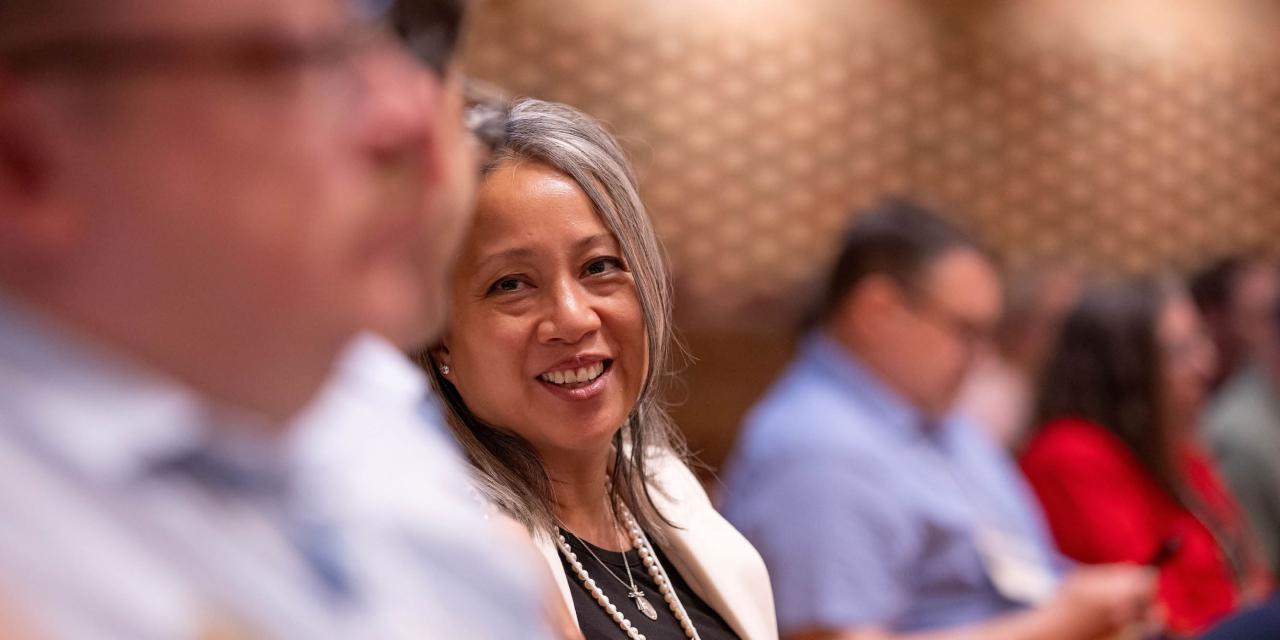Neland Avenue Christian Reformed Church in Grand Rapids, Michigan, is a congregation that “really values a sense of community,” says Dawn Hendriksen, Neland’s music and worship coordinator.
“The church has a strong music tradition, and singing in four part harmony is a way of expressing community. The congregation has never been very visual. We’ve been overall content to not have a screen. People worried that using a screen would tie them in to a particular style,” she says.
The church owned a screen and used it during summer services, held in the air-conditioned activity room (gym) rather than the humid sanctuary. Hendriksen says the screen was used mainly to project hymns.
After the “Alive to the Spirit!” brainstorming session, a small group began operating as a visual arts group. They wanted to use the screen to project art developed by all ages during the project. “We knew it would be important to let people know what was coming and why. We discussed the idea with the elders, council, administration, and congregation,” Hendriksen says.
She notes that using a screen in the sanctuary required more creativity than using it in the activity room. “People were concerned that a screen would be ugly. They didn’t want to see it all the time. The front wall of our sanctuary has a huge opening. Behind the pulpit we have an organ and unused choir lofts. The screen came down on the wall above the pulpit. We used a rear projector hooked onto the wall behind the choir area, and we used the screen pretty much every Sunday during both series,” she says.
During the first series, Len Kuyvenhoven projected key sermon points, sometimes illustrated with classic art. Worshipers said they appreciated seeing how a piece of classic art can reiterate a sermon theme.
During the second series, Hendriksen projected nearly all the art produced by the congregation.”We didn’t use the screen for music because we can’t get the sanctuary dark enough so everyone can see the notes for four part harmony. We had to turn some lights off to project the art, and the lighting was a little gloomy,” she says.
Yet what the congregation lost in light, it gained in oneness. “There’s a sense of community from seeing your own art or art of people whose story you know a bit about. I loved seeing pictures made by someone and thinking, ‘Wow! That’s how you see it?’ The combination of the visual nature and communal feel was striking,” Hendriksen says.
Using the screen to bring the Holy Spirit to the forefront of Neland’s consciousness worked well. Hendriksen says it sparked interest in worship that’s more participatory, creative projects that big groups can do, and excitement for going deeper together into one topic. She also admits, “We were so tired when we got done with the second series.”
Since then the church has occasionally projected images from the previous week’s sermon during the offertory. Hendriksen says it works as a visual review of the last sermon. She expects that worship planners and leaders will gradually use the screen more.

